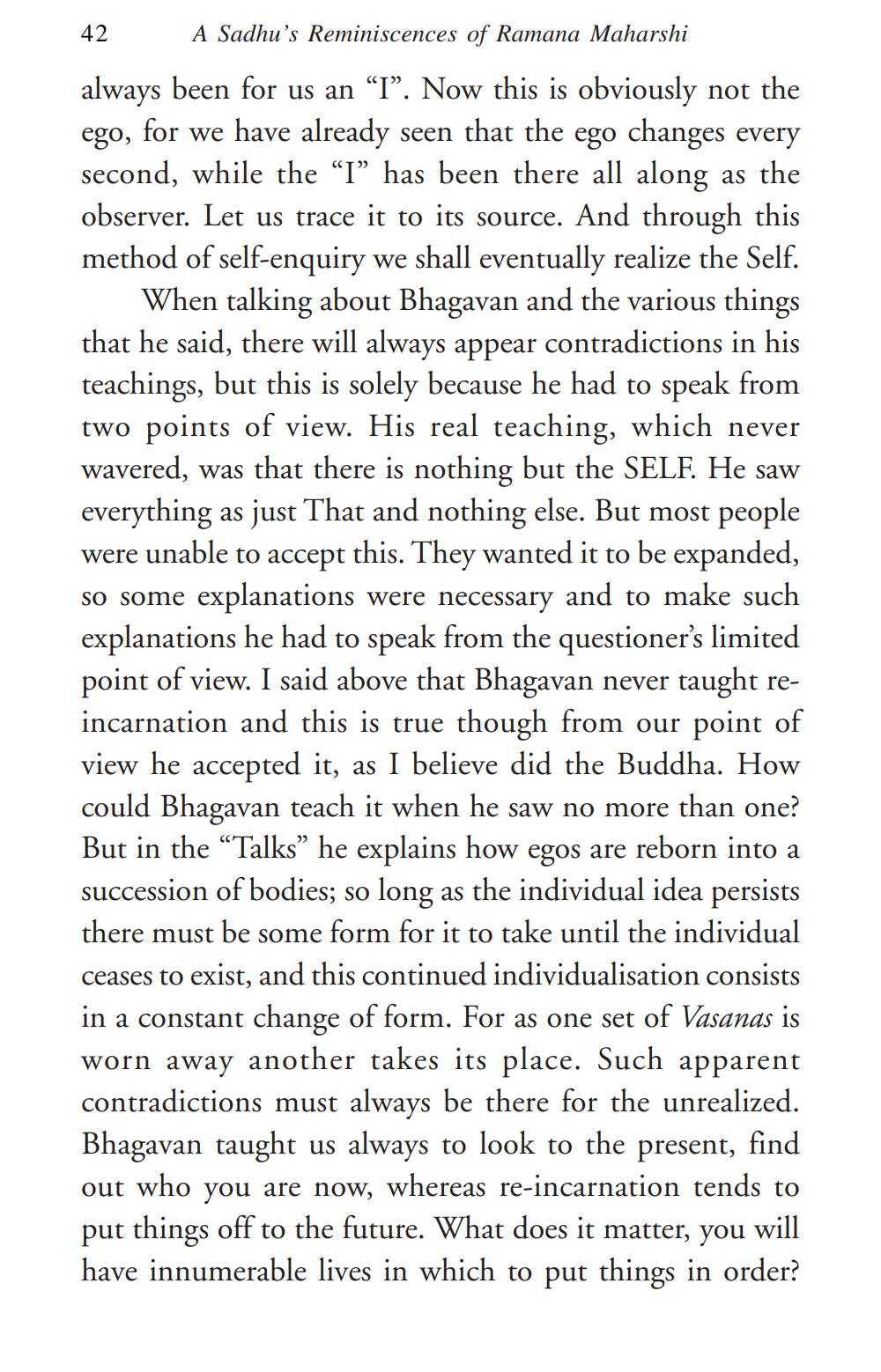________________
42 A Sadhu's Reminiscences of Ramana Maharshi always been for us an “I”. Now this is obviously not the ego, for we have already seen that the ego changes every second, while the “I” has been there all along as the observer. Let us trace it to its source. And through this method of self-enquiry we shall eventually realize the Self.
When talking about Bhagavan and the various things that he said, there will always appear contradictions in his teachings, but this is solely because he had to speak from two points of view. His real teaching, which never wavered, was that there is nothing but the SELF. He saw everything as just That and nothing else. But most people were unable to accept this. They wanted it to be expanded, so some explanations were necessary and to make such explanations he had to speak from the questioner's limited point of view. I said above that Bhagavan never taught reincarnation and this is true though from our point of view he accepted it, as I believe did the Buddha. How could Bhagavan teach it when he saw no more than one? But in the “Talks” he explains how egos are reborn into a succession of bodies; so long as the individual idea persists there must be some form for it to take until the individual ceases to exist, and this continued individualisation consists in a constant change of form. For as one set of Vasanas is worn away another takes its place. Such apparent contradictions must always be there for the unrealized. Bhagavan taught us always to look to the present, find out who you are now, whereas re-incarnation tends to put things off to the future. What does it matter, you will have innumerable lives in which to put things in order?




